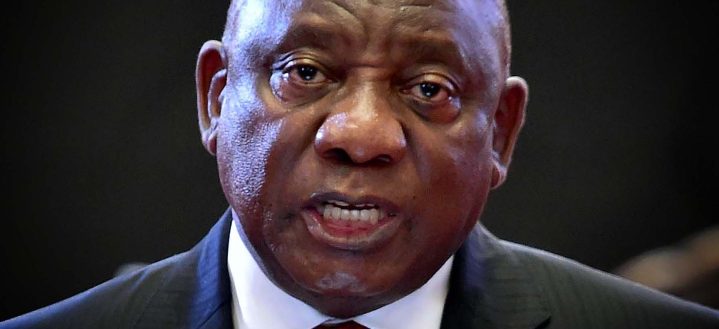ANALYSIS
Ramaphosa’s 100 (working) days of social compacting have come and gone, but who’s counting?

The 100 days for the social compact President Cyril Ramaphosa promised in his State of the Nation Address have come and gone. It’s more like 100 working days. But who’s counting – if at the end it leads to a solid, workable concrete social compact?
The 100 (working) days for a social compact would coincide with 16 June, or Youth Day, that commemorated the 1976 Soweto student uprising against apartheid education that spread countrywide.
As of last week, after a handful of meetings, agreements seem some way off by all accounts.
On 10 February 2022 President Cyril Ramaphosa in his State of the Nation Address (Sona) situated this new social compact within “a new consensus, which embraces our shared responsibility to one another, and acknowledges that we are all in this together” – that’s classical social compact theory going back to Thomas Hobbes, John Locke and Jean-Jacques Rousseau – and called for the need for a series of trade-offs across government, labour, business and communities.
“We have given ourselves 100 days to finalise a comprehensive social compact to grow our economy, create jobs and combat hunger,” said Ramaphosa then.
“This work will build on the foundation of the Economic Reconstruction and Recovery Plan [ERRP], which remains our common programme to rebuild the economy…”
That economic plan is one social compact that already exists. It was announced by Ramaphosa on 15 October 2020 at a joint sitting of Parliament after lengthy negotiations at the National Economic Development and Labour Council (Nedlac), that is also centreplace in the current discussions on the new social compact.
South Africa’s problems have remained at constant crisis point – joblessness, rising hunger and poverty, corruption, crumbling infrastructure from clinics to roads, deteriorating water services and quality, floundering electricity supply beset by rotational power cuts, and corruption.
The analysis of domestic woes, regardless how harshly or softly-softly the language or the push to control the optics, is and has been down pat for a long time already.
As is illustrated recently by Ramaphosa, also from Sona 2022:
“When electricity supply cannot be guaranteed, when railways and ports are inefficient, when innovation is held back by a scarcity of broadband spectrum, when water quality deteriorates, companies are reluctant to invest and the economy cannot function properly.
“With a view to addressing these challenges we are accelerating the implementation of far‐reaching structural reforms to modernise and transform these industries, unlock investment, reduce costs and increase competitiveness and growth.”
The policy responses have been set for a while now. These include spectrum sale to increase broadband, easing the water permit regime, a critical skills list, corporatising Transnet Port Authority and offering initial private sector slots on the rails.
The organisational response largely has been to centralise powers and control in the Presidency, from the investment unit, the project office that’s pushing the employment stimulus to the infrastructure unit’s pursuit of so-called catalytic projects.
And the joint Presidency and National Treasury initiative, Operation Vulindlela, according to its 2022 first quarter update, is focused on “driving a far‐reaching economic reform agenda for South Africa, which will fundamentally transform our economy for the better…” Significant parts of that work remain focused on departmental policy matters, from work visas to a water regulator and a transport economic regulator.
Looks good on paper, and sounds good in a sound bite. But the nub of the South Africa doldrums is not in the analysis. It is in implementing solutions – and doing the hard work at pace to impact qualitatively, rather than the current obsession with the bigger the number the better, with a dash of PR ribbon cutting.
It also needs a good dose of reflexive and responsive qualitative parliamentary, and professional, oversight that is not beholden to party-political machinations.
The spectrum auction first mentioned in February 2018 was finally done in early 2022.
The lifting of the licensing threshold to 100MW embedded power announced in June 2021 is a key structural reform. But the National Energy Regulator of South Africa (Nersa) was not dialled in, and alongside environmental impact assessment snarl-ups, such self-embedded power projects face delays.
Sustainable electricity supply is a key structural reform. The urgent need right now is for 4,000MW to 6,000MW. Eskom has for some time said it would be the only way to end rotational power cuts, but those are nowhere yet on the horizon. It seems relatively uncomplicated measures, like contractual changes to independent power producers who can sell more onto the grid, are stuck.
That “immediate” need for 4,000MW to 6,000MW electricity was reiterated by Public Enterprises Minister Pravin Gordhan in his Budget vote speech on Friday. A day earlier his Cabinet colleague, Mineral Resources and Energy Minister Gwede Mantashe, in his budget vote debate, said a potential of 13,000MW, including 2,500MW of nuclear power, would be procured by 2024. Just nothing for right now, when it’s needed.
As the economy is being master-planned by Trade, Industry and Competition Minister Ebrahim Patel, sometimes the government itself undoes these. The sugar industry was up in arms at the Budget 2022 surprise hike in the health promotion levy, effectively a sugar tax; in the industry master plan that was a still to be negotiated, outstanding matter. Two months later, in April 2022, Finance Minister Enoch Godongwana delayed that increase by a year.
When it comes to Home Affairs, it’s just weird.
Its minister, Aaron Motsoaledi, wants his department reclassified as a “security department” so it can open its doors on Saturdays, according to a parliamentary reply to EFF MP Rosina Komane dated 29 April 2022.
“The department has submitted to Cabinet a Home Affairs Bill, which will change the nature of [the] Home Affairs Department into a security department which is entitled to open on weekends.”
Motsoaledi seems unaware Home Affairs is already in the Cabinet security cluster alongside the police, soldiers and spooks – and has been since 17 February 2016, when Cabinet decided to move it from the governance ministerial cluster.
“2.7. Cabinet approved that Department of Home Affairs [DHA] be reclassified under the Justice, Crime Prevention and Security Cluster…” said the statement on the Cabinet meeting of 17 February 2016.
A year later on 1 March 2017, Cabinet “approved the proposed measures set out in the business case to reposition the Department of Home Affairs. The department must be positioned within the security system of the state so that it contributes to national security…” according to the official statement.
And by all accounts, that “repositioning” is done. Security ministerial briefings include Home Affairs; at Parliament Home Affairs is in the peace and security Q&A sessions.
No such “security department” is set out in the Constitution; and nowhere in law does “security” determine working hours or conditions.
From the parliamentary reply it appears Motsoaledi’s push for Home Affairs as a “security department” is because of his ministry’s failed labour relations over Saturday opening hours.
It’s government hubris. Instead of dealing with the problem at the correct level, a new law is proposed to circumvent the issue. Given the legislative pipeline can run for years, nothing is actually solved. Except that the government can claim to do a fungible “something”.
South Africa’s problems are well-documented and analysed, and the economic social compact, or the ERRP, has identified structural reforms and more of what’s needed. It’s not more talk.
So what would this new social compact look like?
In these Nedlac-based discussions, the government would have asked labour to forgo pay demands as its trade-off in this new social compact. Already one in every three rand spent is for public sector wages. Co-incidentally, on Friday the government rejected the current 10% public sector wage demand as unaffordable to a national purse.
Labour would have told the government not to touch workers on their rights and protection, and instead look at cutting State Capture, malfeasance and corruption. In the brutality of rising petrol, food and other price hikes, the two million jobs lost in the two-year Covid-19 lockdown has meant those with jobs are looking after more relatives without.
This is the social network that holds much of South Africa together, alongside 18-million social grants paid monthly, alongside the R350 relief of social distress grant that in the past was paid to 10-million South Africans who do not receive any other support.
Despite civil society’s activism across South African life, it remains unclear what contributions, and what consultations, are coming from the Nedlac community sector that includes people, who also serve on other government structures like the Covid-19 lockdown social change ministerial advisory committee.
Business in recent weeks increasingly has called for regulatory reforms to ease doing business – from cutting red tape to labour market reform – and better infrastructure. Publicly business has positioned itself, if not as pro-government, then as supportive, in a move perhaps to leverage concessions, more than, for example, tailoring its job provision to state tax subsidies.
And the government? Ratings agencies seem to appreciatively eye Operation Vulindlela that does not account publicly to, for example, a committee of Parliament. But hamstrung by an ineffectual Cabinet stymied by collective decision-making protocol, the public sector officialdom rarely does more than minimum malicious compliance.
Difficult discussions underlie this new social compact. It remains to be seen if turning the 100 days into 100 working days, or longer, will be worth the wait. But it really must be – for South Africa’s sake. DM
[hearken id=”daily-maverick/9472″]

















 Become an Insider
Become an Insider
Ramaphosa work arounds. God alone knows how he made so much money. He can’t get cabinet to deliver anything
Easy – BEE and AA.
Why the government is dragging its heels when it comes to private power generation? Probably kickback for Karship power contract and the new nuclear plan. Thank you yet again ANC…